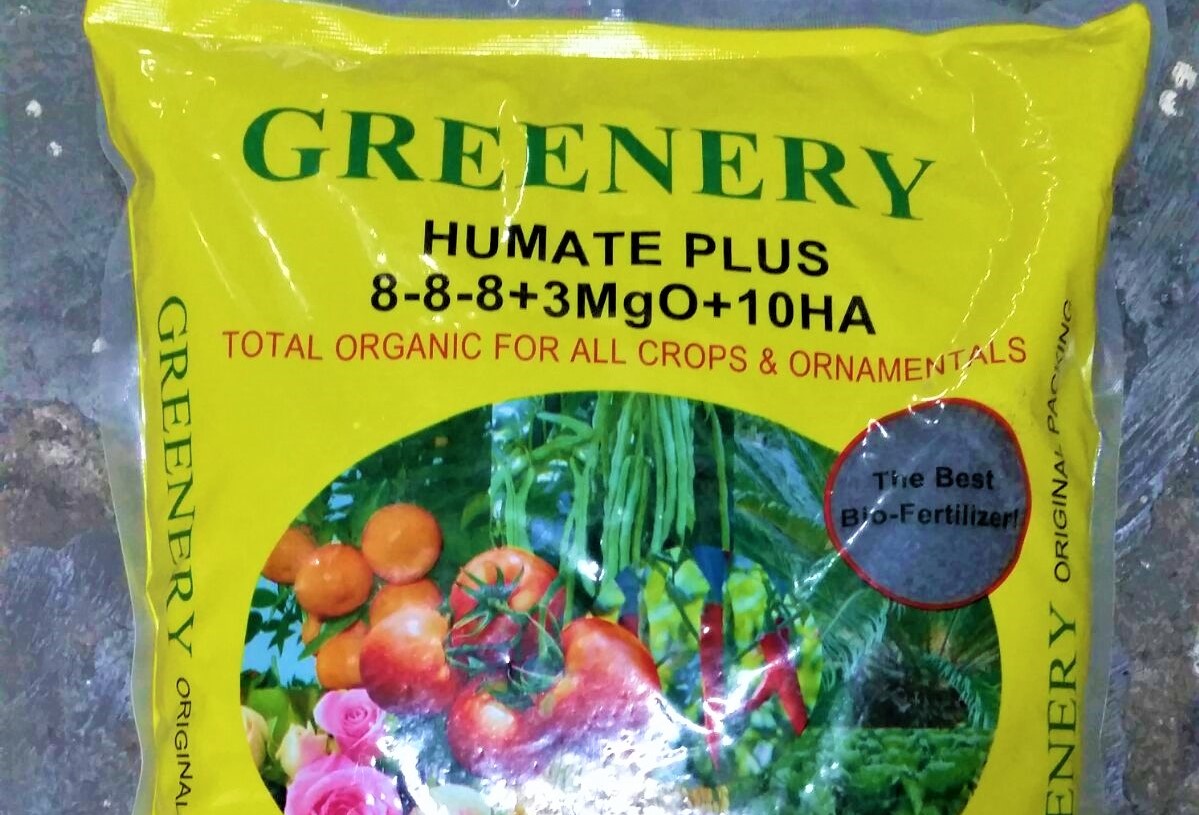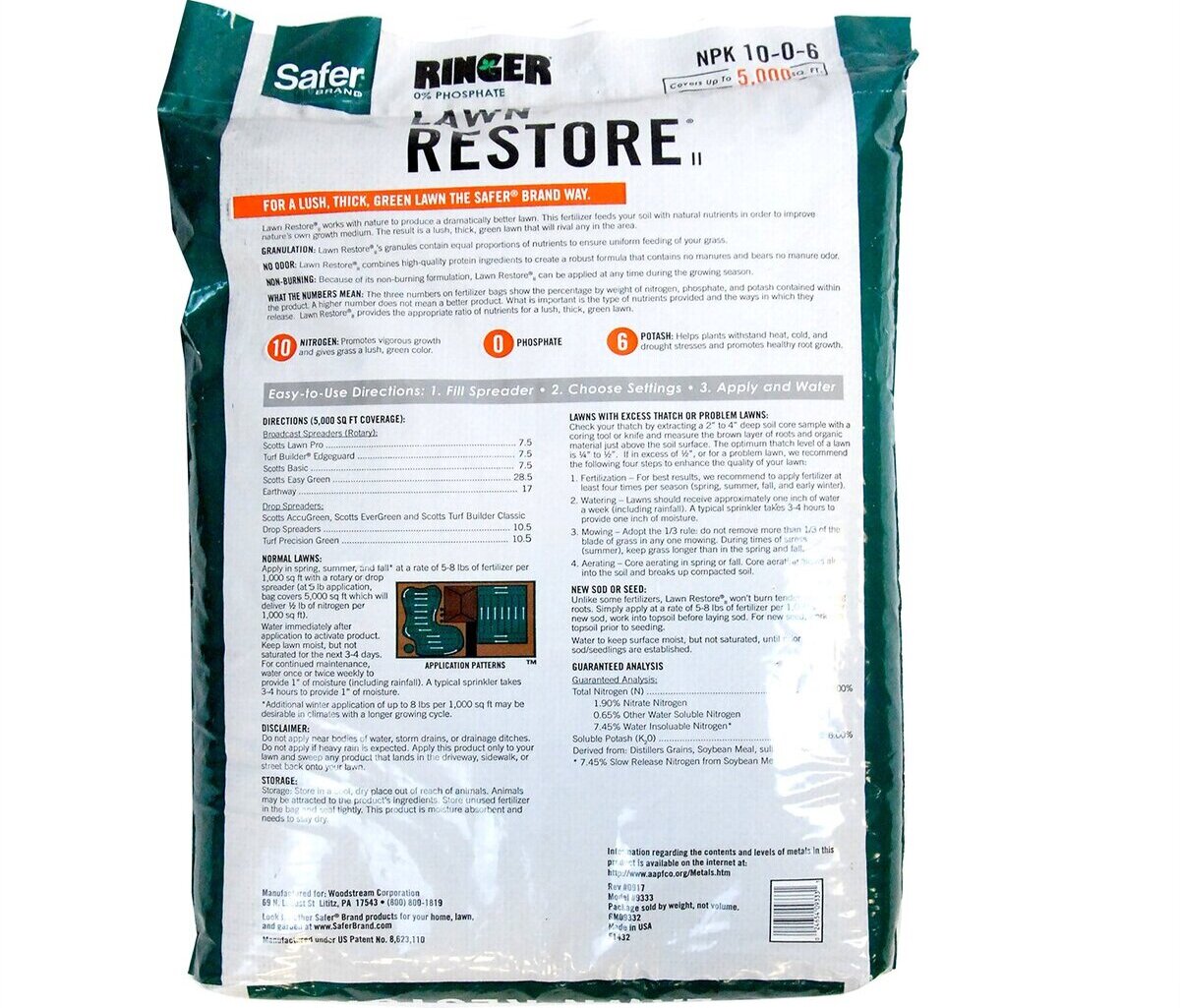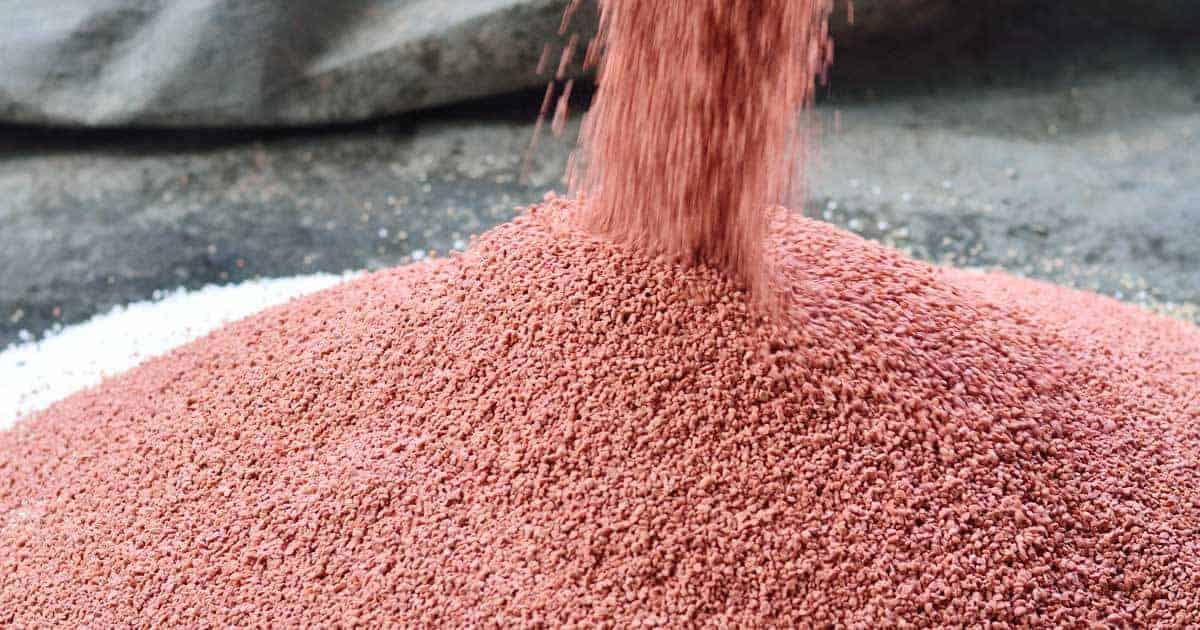Home>Gardening Basics>What Is 8-8-8 Fertilizer


Gardening Basics
What Is 8-8-8 Fertilizer
Modified: January 22, 2024
Learn all about getting started with 8-8-8 fertilizer, including its composition, benefits, and how to use it effectively in your garden.
(Many of the links in this article redirect to a specific reviewed product. Your purchase of these products through affiliate links helps to generate commission for Chicagolandgardening.com, at no extra cost. Learn more)
Table of Contents
Introduction
Welcome to the world of gardening and fertilizers! If you’re an avid gardener or just starting out, you’ve probably come across various types of fertilizers. One popular option is the 8-8-8 fertilizer, known for its balanced nutrient composition.
As a gardener, you know that plants require essential nutrients to thrive. These nutrients include nitrogen, phosphorus, and potassium, commonly referred to as NPK. The numbers in the fertilizer formula represent the percentage of these nutrients present in the product. In the case of 8-8-8 fertilizer, it contains 8% nitrogen, 8% phosphorus, and 8% potassium.
In this article, we will take a closer look at what 8-8-8 fertilizer is, its composition, the benefits it offers, how to use it, and some precautions to consider. By the end, you’ll have a better understanding of whether 8-8-8 fertilizer is the right choice for your gardening needs.
What is 8-8-8 Fertilizer?
8-8-8 fertilizer is a type of fertilizer that is widely used in the gardening and agricultural industries. It is called 8-8-8 because it contains a balanced mix of three essential nutrients: nitrogen, phosphorus, and potassium. These nutrients, also known as NPK, play a crucial role in promoting healthy plant growth.
Nitrogen is responsible for leaf and stem development, and it is vital for the overall green color of plants. Phosphorus contributes to root development, flowering, and fruiting, while potassium helps with overall plant vigor and disease resistance.
The balanced composition of 8-8-8 fertilizer makes it suitable for a wide range of plants, including vegetables, flowers, trees, shrubs, and lawns. Whether you’re working on a vegetable garden or aiming to enhance the beauty of your flower beds, 8-8-8 fertilizer can be an excellent choice.
This type of fertilizer is available in both granular and liquid forms. Granular fertilizers are solid particles that are applied by spreading them evenly on the soil surface. Liquid fertilizers, on the other hand, are dissolved in water and applied using a sprayer or watering can.
One of the advantages of 8-8-8 fertilizer is its flexibility. Depending on your specific plant’s needs, you can adjust the dosage accordingly. For instance, if your plants require more nitrogen, you can increase the amount of 8-8-8 fertilizer applied. Similarly, if your plants need more phosphorus or potassium, you can adjust the dosage accordingly.
Composition of 8-8-8 Fertilizer
8-8-8 fertilizer gets its name from its balanced composition of essential nutrients. Let’s break down what each of these numbers represents:
- Nitrogen (N): The first number in the formula, 8%, represents the nitrogen content. Nitrogen is a crucial nutrient that plays a significant role in promoting healthy plant growth. It is responsible for leaf and stem development, as well as the overall green color of plants.
- Phosphorus (P): The second number in the formula, also 8%, represents the phosphorus content. Phosphorus is essential for root development, flowering, and fruiting in plants. It aids in nutrient uptake and metabolism, ensuring plants have the energy they need for growth and reproduction.
- Potassium (K): The third number in the formula, also 8%, represents the potassium content. Potassium is involved in numerous physiological processes within plants. It helps regulate water movement, enhances overall plant vigor, and boosts disease resistance. Potassium also plays a role in the activation of enzymes, which are essential for various plant functions.
In addition to nitrogen, phosphorus, and potassium, 8-8-8 fertilizer may also contain other secondary and micronutrients that are essential for plant health. These include calcium, magnesium, sulfur, iron, manganese, zinc, and boron, among others. The presence of these additional nutrients ensures that plants have a well-rounded and balanced nutrient intake.
8-8-8 fertilizer is available in different forms, such as granules or crystals. It can be applied directly to the soil or dissolved in water and used as a liquid fertilizer. The granules or crystals slowly release nutrients into the soil over time, providing a steady and continuous supply of essential elements to plants.
It’s important to note that the nutrient composition of 8-8-8 fertilizer can vary slightly between brands and manufacturers. Therefore, it’s always a good idea to read the label or product description to ensure you’re aware of the specific nutrient content of the fertilizer you’re using.
Benefits of Using 8-8-8 Fertilizer
8-8-8 fertilizer offers several benefits when used in gardening and plant care. Let’s explore some of the advantages it provides:
- Balanced Nutrient Composition: 8-8-8 fertilizer contains equal amounts of nitrogen, phosphorus, and potassium. This balanced nutrient composition ensures that plants receive essential elements in the appropriate proportions. It promotes overall plant health, growth, and development.
- Versatility: 8-8-8 fertilizer is suitable for a wide range of plants, including vegetables, flowers, trees, shrubs, and lawns. Whether you’re working on a small potted plant or a large garden, this fertilizer can be used across various plant types, making it versatile for different gardening needs.
- Promotes Greenery and Growth: The nitrogen content in 8-8-8 fertilizer stimulates lush green foliage and promotes vigorous plant growth. It helps plants in the early stages of development and encourages the production of healthy leaves and stems.
- Enhances Flowering and Fruiting: The phosphorus in 8-8-8 fertilizer is vital for flower bud formation and fruit development. It supports strong root growth and provides plants with the energy they need to produce vibrant flowers and bountiful fruits.
- Improves Plant Health and Disease Resistance: The potassium content in 8-8-8 fertilizer helps plants become more resilient to stress, diseases, and pests. It strengthens cell walls, enhances water and nutrient uptake, and improves overall plant health.
- Easy to Use: Whether you choose granular or liquid form, 8-8-8 fertilizer is relatively easy to apply. Granules can be spread evenly over the soil surface and watered in, while the liquid form can be easily mixed with water and applied using a sprayer or watering can.
- Availability: 8-8-8 fertilizer is readily available at garden centers, nurseries, and online stores. It is a popular choice among gardeners due to its balanced nutrient composition and versatility.
By using 8-8-8 fertilizer, you can provide your plants with the essential nutrients they need to thrive, resulting in healthy, vibrant, and productive green spaces.
How to Use 8-8-8 Fertilizer
Using 8-8-8 fertilizer is a simple process that can greatly benefit your plants. To ensure optimal results, follow these steps:
- Read the instructions: Start by carefully reading the instructions provided on the fertilizer packaging. This will give you specific guidelines on dosage recommendations and application methods.
- Prepare the area: Before applying the fertilizer, prepare the soil by removing any weeds or debris. Loosen the soil surface with a garden fork or rake to allow better nutrient absorption.
- Determine the application method: Depending on the form of 8-8-8 fertilizer you have (granules or liquid), choose the appropriate application method. Granules can be spread evenly over the soil surface, while the liquid form can be mixed with water.
- Measure the fertilizer: Use a measuring cup or scale to accurately measure the recommended amount of 8-8-8 fertilizer. Follow the dosage guidelines provided on the packaging to avoid over- or under-fertilizing your plants.
- Apply the fertilizer: Sprinkle the measured granules evenly around the plants, ensuring they are at a safe distance away from the stems or trunks. Alternatively, mix the liquid fertilizer with water according to the specified ratio and apply it to the soil around the plants using a sprayer or watering can.
- Water the plants: After fertilizing, water the plants thoroughly to help the nutrients penetrate the soil and reach the roots. This will also prevent any potential fertilizer burn on the plants.
- Follow the feeding schedule: Repeat the fertilization process as directed by the manufacturer or based on the specific needs of your plants. It is generally recommended to fertilize every few weeks during the growing season.
- Track the progress: Monitor the growth and health of your plants to assess the effectiveness of the 8-8-8 fertilizer. Look for signs of improved foliage, increased flowering or fruiting, and overall plant vigor.
Remember, each plant species may have different fertilizer requirements, so it’s essential to research and understand the specific needs of your plants before applying any fertilizer. It’s always better to under-fertilize than to over-fertilize, as excessive nutrients can harm plants and leach into the environment.
Precautions and Considerations
While using 8-8-8 fertilizer can be beneficial for your plants, it’s important to take certain precautions and considerations into account:
- Follow dosing instructions: Adhere to the recommended dosage guidelines provided on the fertilizer packaging. Over-fertilizing can result in nutrient imbalances and potentially harm your plants.
- Avoid direct contact with leaves and stems: When applying granular fertilizer, ensure that the granules do not come into direct contact with the leaves or stems of your plants. This can cause burning or damage to the plant tissue.
- Water after application: After applying 8-8-8 fertilizer, always water your plants thoroughly. This will help dissolve the granules or distribute the liquid fertilizer in the soil, allowing the nutrients to reach the roots.
- Store properly: Keep 8-8-8 fertilizer in a cool, dry place away from direct sunlight and moisture. Proper storage will maintain the quality and effectiveness of the fertilizer over time.
- Consider environmental impact: Be mindful of the potential environmental impact of fertilizers. Avoid overuse and runoff by applying fertilizers in accordance with plant needs and local regulations. This helps prevent nutrient pollution in water bodies and preserves the balance of ecosystems.
- Consider alternative fertilizers: While 8-8-8 fertilizer is a popular option, it may not suit the specific needs of all plants. Some plants may require higher or lower nutrient ratios. Consider conducting a soil test and exploring alternative fertilizers to cater to the specific needs of your plants.
- Keep out of reach of children and pets: Store fertilizer in a safe place where children and pets cannot access it. Fertilizers can be harmful if ingested accidentally.
By taking these precautions into consideration, you can ensure the effective and safe use of 8-8-8 fertilizer in your gardening practices.
Alternatives to 8-8-8 Fertilizer
While 8-8-8 fertilizer can be a suitable choice for many plants, there are several alternatives available that can cater to specific plant needs. Here are some popular alternatives:
- High-Nitrogen Fertilizer: If your plants require a significant boost in leaf and stem development, a high-nitrogen fertilizer, such as a 20-10-10 or 15-5-5 formulation, may be more suitable. These fertilizers are ideal for promoting lush green foliage and are often used on lawns and leafy vegetables.
- Blooming Fertilizer: For plants that primarily require enhanced flower and fruit production, a blooming fertilizer with a higher phosphorus content, such as a 5-10-5 or 10-20-10 blend, can be beneficial. These fertilizers provide the necessary nutrients to support robust blossoms and optimal fruiting.
- Organic Fertilizers: If you prefer natural and organic gardening practices, there are numerous organic fertilizers available. You can use compost, well-rotted manure, bone meal, fish emulsion, or seaweed extracts to provide essential nutrients to your plants. These options are environmentally friendly and help improve soil health over time.
- Slow-Release Fertilizers: Slow-release fertilizers are designed to provide a steady supply of nutrients over an extended period. These types of fertilizers, whether organic or synthetic, slowly break down in the soil, ensuring continuous nutrient availability to the plants. They are particularly useful for long-term plant growth and are often applied less frequently compared to traditional fertilizers.
- Liquid Fertilizers: Liquid fertilizers, such as fish emulsion or seaweed extracts, offer a quick and readily available nutrient source for plants. They are easily absorbed by the roots and provide fast results. Liquid fertilizers can be used as foliar sprays or applied directly to the soil.
When selecting an alternative fertilizer, consider the specific needs of your plants, soil conditions, and environmental factors. Conduct a soil test to determine the nutrient deficiencies or imbalances and choose a fertilizer that addresses those specific requirements.
Remember, it’s essential to follow the application instructions provided with the chosen fertilizer and monitor your plants’ response closely. Adjust the fertilization schedule and dosage as needed, keeping in mind the individual needs of your plants.
Conclusion
8-8-8 fertilizer is a versatile and balanced option for promoting healthy plant growth. With equal proportions of nitrogen, phosphorus, and potassium, this fertilizer provides essential nutrients to support overall plant health, leaf development, root growth, flowering, and fruit production.
Using 8-8-8 fertilizer is a simple process that involves preparing the area, measuring the fertilizer, applying it to the soil, and watering thoroughly. Following proper dosing instructions and considering precautions such as avoiding direct contact with plant tissue and proper storage will ensure effective and safe use.
However, it’s worth noting that alternative fertilizers may better suit the specific needs of certain plants. High-nitrogen fertilizers are ideal for promoting foliage growth, while blooming fertilizers provide optimal support for flower and fruit production. Organic fertilizers and slow-release options are great for those desiring natural approaches or long-term nutrient release.
Understanding your plant’s nutrient requirements, conducting a soil test, and considering environmental impact will help you make an informed decision on the best fertilizer for your garden.
Remember, proper fertilization is just one aspect of plant care. Combining it with other essential practices like proper watering, sunlight exposure, pest control, and soil maintenance will result in healthier, more beautiful plants.
So go ahead and explore the world of 8-8-8 fertilizer and other alternatives to nurture your plants and create thriving green spaces!









